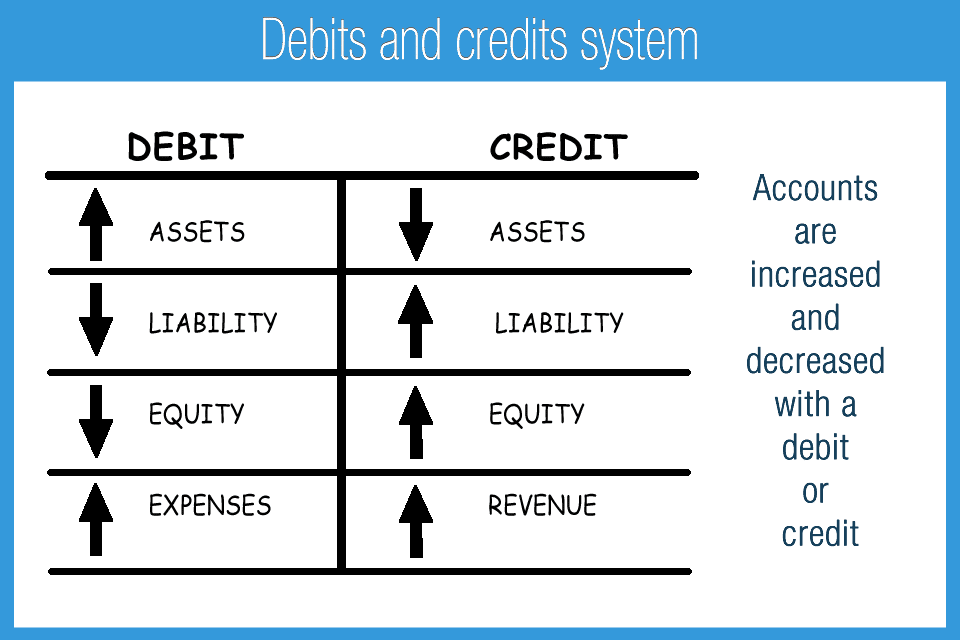Before understanding the explanation and use of debit and credit, we will briefly introduce their use and how the concept of double-entry emerged.
Luca Pacioli, Pastor of the Order of Francis, was someone who developed double-entry accounting techniques. His nickname is “Father of Accounting” because of his approach to be the basis for modern accounting.
What is debit and credit like if we look at it from an accounting point of view? Read this article carefully so you can understand the difference.

Table of Content:
Table of Content
Understanding Debit and Credit
Basically, you must record every transaction in two accounts: debit and credit.
Check out the full explanation of debit accounts and credit accounts and their uses in accounting:
Understanding debit
In Latin, debit means debere. A debit is an accounting entry that adds an asset or expense account, reducing liability or equity.
The addition of assets can be from the addition of money, equipment, and equipment to intangible assets such as rent and receivables.
Understanding credit
The Latin term for credit is credere. In contrast to debit, credit is an accounting entry that increases liability or equity accounts, lowers asset or expense accounts.
If the asset or expense is in the credit position, there is a reduction in the account. Conversely, if the debt, accumulation, and equity account is in a debit position, this account has increased its value.

Difference between Debit and Credit
Referring to the Statement of Financial Accounting Standards (PSAK) that applies in Indonesia, debit is usually interpreted as money, whereas credit is an expense in transactions.
In understanding the difference, you must know that at least these two accounts will always be affected in every accounting transaction.
The total transactions recorded in debit and credit for each transaction must be the same as the other so that you can balance the transaction. If the transaction is not level, it will affect the financial statements.
That way, the use of debits and credits in a two-column transaction recording format is essential. You can see the points that explain the difference between the two, namely:
- Debit refers to the left side of the general ledger account, while credit refers to the right side of the general ledger account. The debit account will record all the recipient account while the credit account is for the giver.
- The total financial transactions that come in mean that they are included in the debit account on the balance sheet. Meanwhile, any outgoing transactions are recorded in a credit account.
- All expenses and losses are debits in the income statement, while income is in credits.
- The cause of the increase in debt is due to an increase in cash, inventory, machinery, equipment, land, buildings, and insurance. An increase in shareholder funds, costs, retained earnings, debt, and others causes an increase in credit.
The conclusions regarding the above differences are as follows:
- Debit is a recording of a reduction in the nominal money, while credit is a recording when there is additional money.
- Debit transactions can refer to the activity of saving money at the bank, while credit refers to the activity of borrowing money at the bank.
- A debit is a record of reduced savings or deposits.

Use of Debit and Credit
Here you will understand the account name of the use of debit and credit in accounting to understand the difference better well:
Asset Account
There are two types of assets, the first is fixed assets, and another is current assets. Current assets are property that is high in liquidity. Some liquid accounts in current assets include cash, accounts receivable, machinery, vehicles, and office equipment. That way, when the asset increases, then its position is on a temporary debit.
Expense Account
In accounting, expense is a deduction from income that results in net income on the income statement of a pre-tax business. Expenses can also be used to deduct a standard amount from an economy’s benefits in a single accounting period, known as cash out.
Expenses are business spending that can make a business run. This account increases if debited and will decrease if credited.
Liability and Equity Accounts
Debits and credits also have differences in debt and equity accounts. For example, a company has made a loan to the Bank of $ 30.000 as initial capital. It might be similar to approaching an sg money lender, where businesses often seek startup funds. So in the journal, you can know the cash increased by $ 30.000 from bank loans.
Accumulated Accounts
Accumulation is the part of a non-liquid asset that can increase in value if credited. The balance sheet will reduce the value of fixed assets such as vehicles and tools. Recording the accumulation of vehicles or tools will facilitate the valuation of the asset experiencing losses or profits when resale of the goods.
The two are closely related in every transaction that occurs. Business financial management is not just managing finances. Knowledge about the relationships and differences between the two is fundamental in supporting business continuity.
Why is Debit and Credit Recording Important?
Transactions always happen, especially if you run a business. By reading this article, we hope you can realize the usefulness of bookkeeping and record-keeping, especially debits and credit on balance sheets and ledgers.
Be careful if you do not have debit and credit reporting documents. Controls in controlling the inflow of a company’s finances cannot be exercised, and data related to finance cannot be tracked.
Managing finances is complex if you do not have good resources. You can use Accounting Software as your business finance solution.
Also Read: The Best Accounting Software – Factors to Consider
HashMicro provides the best Accounting Software for enterprises in Singapore. Reduce the time-consuming manual accounting process, control procurement costs, view financial information in real-time, and control finances in each branch of the business with in-depth analysis and accurate estimates of your revenue.

With HashMicro Accounting Software, profitability increases due to more precise and accurate budget calculations. Click here for more




































